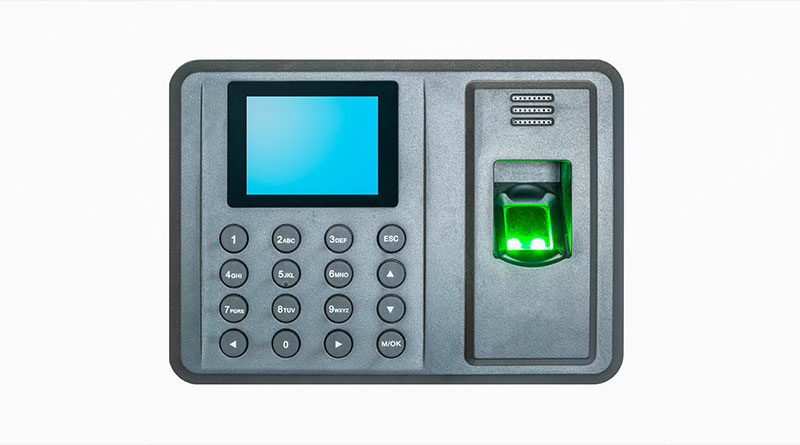How Law Enforcement Agencies are Using Biometrics?
Biometric identification management technology is so efficient for security purposes that law enforcement agencies around the world are embracing it with open arms. They strategically use either a physiological modality, a behavioral modality or a combination of both — the most common modalities in use are fingerprints, iris and facial recognition, gait, and voice recognition. The rapid implementation of biometrics has sparked a revolution within the global law enforcement and security industry.

Biometrics in Law Enforcement
Biometrics are not a new security tool in law enforcement. The first fingerprint was taken 125 years ago by an Argentinian criminologist. Today almost every country in the world has adopted biometric recognition including the U.S., Russia, China, Japan, and Australia, just to name a few. In recent years, destructive incidents around the world have forced the hand of law agencies to adopt biometric technologies as fast as possible.
Here are some examples of how law enforcement agencies have implemented biometric technologies in 2016:
- The US is the most technologically advanced country in the world and they are spending millions of dollars to ensure the security of their country. A report by the Center for Privacy and Technology at Georgetown University Law School said that currently, U.S. law enforcement agencies have the facial recognition data of 117 million Americans. Homeland Security is planning to implement biometric recognition at US borders to more accurately track foreign visitors. A report by IB Times in May 2016 said that the FBI now has the largest biometric database in the world.
- The UK’s Home Office announced in December 2016 that they are going to fund a police joint forensics and biometrics program. Another report says that Welsh police are trialing face recognition probation tools to detect criminals. The DailyMail reports that the Metropolitan Police tested a facial recognition system in August 2016’s Notting Hill Carnival.
- In November 2016, Interpol called for enhanced biometric data sharing across countries to prevent the global threat of foreign terrorists.
- A popular Finnish Newspaper reported last December that Finnish police want to use surveillance camera face recognition technology.
- According to RT in November 2016, Russian police will use fingerprint recognition to check the identities of all foreigners arriving in Russia. Another Russian newspaper reported that Interpol helps Russian police arrest over 100 suspects per year.
- In the meantime, a leaked document revealed that the German Interior Ministry wants to install facial recognition video surveillance in the country’s airports and train stations.
- In August 2016, a report says that South Australian police are going to adopt facial recognition for the Northern territory of the country.
- A Namibian news agency reported that the Namibian police force became the first law-enforcement agency in southern Africa to introduce an automated biometric identification system (ABIS) in Windhoek, the capital of Namibia.
- A news report in August 2016 said that in India, Punjab police used a biometric verification system in Lahore search operations.
- In April, a man stole the ID card of a South Korean government employee and entered a government complex in central Seoul five times, according to the National Police Agency who are now considering implementing biometric modalities for accurate identification in all government buildings.
- A Chinese newspaper reported that Chinese police cars will be able to scan your face with technology developed by a team of researchers at the University of Electronic Science and Technology of China’s Police Equipment Joint Research Lab.
- Japan is one of the most technologically strong countries in the world. Their law enforcement department is planning to implement facial recognition at airports to stop terrorists, according to this report. In July 2016, DNA published a news report that Japan donated 200m yen or U.S. $1.96 million to install a facial recognition system at airport in Pakistan as part of a joint effort to improve international security.
- Global News reported in January 2016 that Canada is going to test facial recognition technology at various border locations. They also reported in August 2016 that facial recognition is coming to Saskatchewan driver’s licenses.
- Over a year ago, Malaysia and the U.S. agreed to share a biometric database of terrorist suspects. According to government officials, the suspect lists will be used at all entry points in Malaysia and across the United States.
The use of biometrics in law enforcement has continued to surge in 2017. We identified several reports that biometric technology has been adopted by many additional law enforcement agencies in 2017 to help better protect their citizens. These deployments include:
- Kurdistan’s President has said that military forces will undergo biometric registration.
- Belgian police will adopt facial recognition on highway cameras which will help in efforts to identify criminals and protect citizen safety.
- A Mashable report said that China’s latest robot police officer can recognize faces.
- GulfNews reports that Dubai Police will use biometrics to prevent crime. They plan to use facial recognition and artificial intelligence (AI) technology to identify criminals and prevent crime.
- In India, Mumbai police are planning to take their entire fingerprint database online, reported by The Hindu in January 2017.
Conclusion
Biometrics continues to be an important technology to increase security in law enforcement, modernizing individual identification and providing a new tool to ensure citizen safety leaving little doubt about its impact to help catch criminals and prevent crimes. As indicated by the rising trend of an increase in biometrics for law enforcement, we can expect to see additional implementations around the world through 2017 and beyond.














The use of biometrics in law enforcement continues to grow, as technology improves and becomes more widely available. However, it is also important to ensure that the use of biometrics in law enforcement is done in a manner that respects privacy and civil liberties, and is subject to appropriate oversight and regulations.